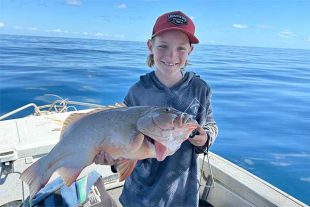NO further signs of Asian green mussels have been found in waters around Weipa, but Biosecurity Queensland is maintaining surveillance activities as summer heralds spawning season.
A plankton tow survey was conducted in mid-October by experts from James Cook University’s TropWATER team. The survey involved water samples being collected from multiple locations to detect traces of Asian green mussel DNA. All samples taken came back negative for the aquatic pest.
Biosecurity Queensland Invasive Plants and Animals general manager Dr John Robertson said this is extremely encouraging news because the plankton tows were conducted in the vicinity of the initial discovery, as well as in areas where currents could have led to other mussels settling and establishing. Asian green mussels are an invasive marine pest that out-compete native species.
A single Asian green mussel was discovered on a settlement plate array adjacent to Rio Tinto’s Amrun port development site south of Weipa in May. Dr Robertson said a number of other surveillance methods have been used in the area including settlement plate deployment and inspection, beach walk inspections, underwater remotely operated vehicle inspection of infrastructure and opportunistic inspection of recreational vessels.
“None of these surveillance activities have revealed further signs of Asian green mussel,” he said. “With the wet season and warmer water temperatures starting the spawning season, we will be working with our key stakeholders and the wider community to maintain surveillance efforts. We need as many eyes out there to assist as we can, particularly because some of the areas where they could be present are relatively remote.”
Asian green mussels are identified by the following characteristics:
- Mussels can be between 8cm and 16cm long;
- Juvenile shell is bright green;
- Adult shell is dark green to brown;
- Shell exterior is smooth with concentric growth rings and finely pitted ridge for ligament attachment;
- Shell interior is smooth, iridescent pale blue to green;
- Shell beak has interlocking teeth (one in right valve, two in left); and
- Posterior is wavy, adductor muscle is large and kidney-shaped.
To report marine pests or for more information, contact Biosecurity Queensland on 13 25 23 or visit daf.qld.gov.au
 Bush ‘n Beach Fishing Magazine Location reports & tips for fishing, boating, camping, kayaking, 4WDing in Queensland and Northern NSW
Bush ‘n Beach Fishing Magazine Location reports & tips for fishing, boating, camping, kayaking, 4WDing in Queensland and Northern NSW









